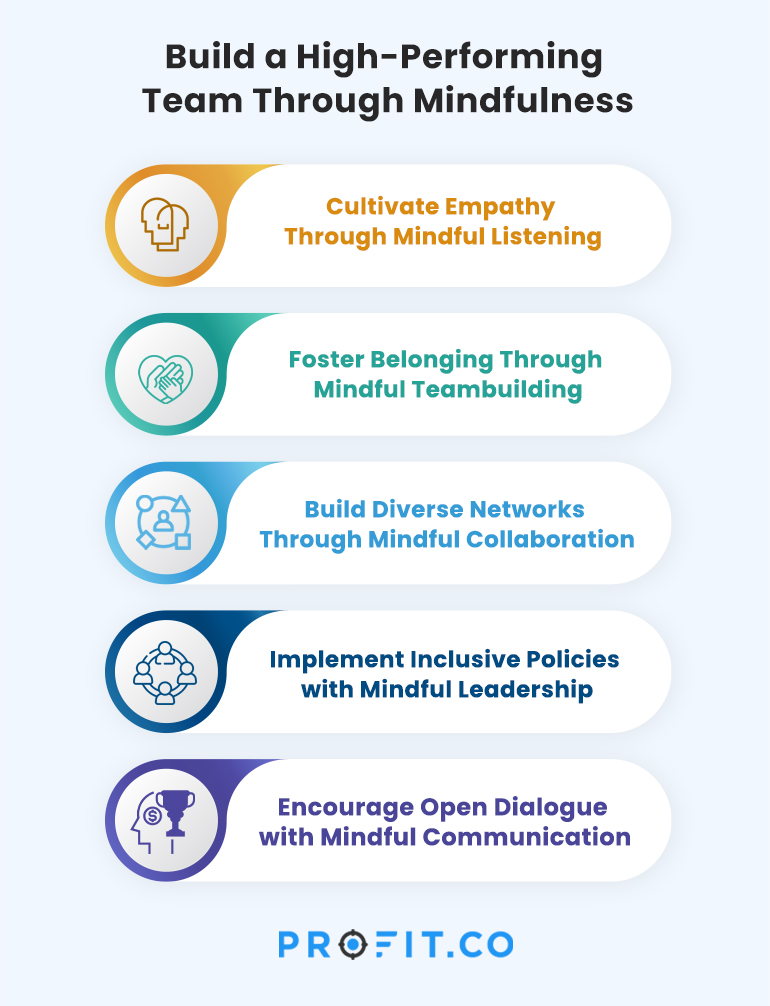Introduction
Creating high-performing teams is more crucial than ever, as diverse and inclusive teams drive innovation and enhance decision-making and problem-solving abilities. However, unconscious bias can undermine these benefits by influencing our judgments and interactions in subtle, often unnoticed ways. We all have them – snap judgments, ingrained stereotypes, and hidden preferences that influence our behavior without our conscious awareness. This blog explores the nature of unconscious bias, the science behind it, how to identify it, and result-oriented strategies for building a culture of mindfulness. Additionally, we’ll discuss the pivotal role leaders play as mentors, advocates, and allies in fostering high-performing, bias-free teams.What is Unconscious Bias?
Unconscious or implicit biases are unconscious stereotypes or attitudes that affect our understanding, actions, and decisions. Unlike overt discrimination, unconscious bias operates outside of our awareness, making it difficult to recognize and address. These biases are often rooted in our upbringing, cultural background, and personal experiences, influencing how we perceive and interact with others. This can manifest in countless ways: favoring someone with a similar background during hiring, overlooking a brilliant idea because it’s presented by a quieter team member, or underestimating someone’s potential based on their age. The impact?** Devastating.** Biased decisions lead to missed opportunities, disengaged employees, and stifled innovation. Diverse teams, on the other hand, are proven to outperform homogeneous ones.Stupidity and unconscious bias often work more damage than venality.
The Science Behind Unconscious Bias
The concept of unconscious bias is grounded in cognitive psychology. Our brains are naturally wired to make quick judgments and categorize information to navigate the world efficiently. This mental shortcut, known as heuristics, helps us make sense of our surroundings but can also lead to biased thinking. Studies using tools like the Implicit Association Test (IAT) have shown that people can hold implicit biases even when consciously rejecting discriminatory beliefs. These biases are formed through societal influences, media portrayals, and personal experiences. Neuroscientific research has demonstrated that unconscious biases activate certain brain regions, such as the amygdala, associated with emotional responses and decision-making. A McKinsey study found that companies with greater ethnic and racial diversity had a 33% chance to perform better than their peers in profitability. Understanding the science behind unconscious bias is the first step in addressing it. By acknowledging that everyone has biases, we can measure them to minimize their impact on our behavior and decision-making processes.How to Identify Unconscious Bias?
Unconscious bias, while invisible, can significantly impact employee morale, engagement, and overall organizational performance. Here’s how you can translate self-awareness strategies into actionable steps for identifying and mitigating bias in the workplaceSelf-Reflection in Action
Regularly reflect on your thoughts and actions. Question your assumptions and consider whether they are based on objective facts or unconscious biases.Journaling
Dedicate a few minutes each day to reflect on your interactions with colleagues. Note situations where you may have quickly judged or relied on assumptions. Ask yourself if there were alternative explanations for the situation.Decision-Making Framework
Develop a structured decision-making framework for hiring, performance reviews, and project assignments. This framework should be based on objective criteria and competencies relevant to the role.Seeking Feedback
Seek feedback from colleagues, mentors, and peers. Constructive feedback can highlight blind spots and areas for improvement.360-Degree Feedback
Implement a 360-degree feedback process in which employees receive anonymous feedback from colleagues, supervisors, and direct reports. This will allow for a well-rounded perspective on potential biases in leadership styles or communication.Mentorship Discussions
During regular mentoring sessions, encourage open communication about potential biases. Mentees can offer valuable insights into how their experiences might differ from those of the leader.Ready to start your journey to a bias-free workplace?
Leveraging Implicit Association Tests (IATs)
Participate in IATs to uncover hidden biases. These strength of association between concepts can be measures using these tests and can reveal implicit preferences.Team IAT Sessions
While individual IAT results are confidential, consider group discussions after taking an IAT to explore team-level biases. Focus on understanding these biases as a collective phenomenon and brainstorm strategies to address them.IAT Results Integration
When reviewing hiring candidates, consider incorporating IAT results (with the candidate’s consent) to identify potential biases in your evaluation. Use this information as a prompt for a deeper exploration of the candidate’s qualifications.Diversity Audits as a Tool
Conduct in your organization to identify patterns of bias in hiring, promotions, and team dynamics.Regular Review of Hiring Data
Hiring data can be analyzed to identify any patterns of bias based on demographics. For example, are certain demographics consistently underrepresented in specific positions?Compensation Review
Conduct a compensation review to ensure equal pay for equal work across all demographics. Look for any discrepancies that indicate unconscious bias impacting salary decisions.Investing in Training and Workshops
Interactive Workshops
Engage in interactive bias training workshops that go beyond theoretical concepts. These workshops should provide practical tools and strategies for identifying and mitigating bias in everyday situations.Case Studies and Role-playing
Utilize case studies and role-playing exercises during training to allow participants to practice applying bias identification and mitigation techniques in simulated scenarios. These steps, when implemented, can create a culture of awareness and accountability surrounding unconscious bias and foster a more inclusive and equitable workplace, leading to a more engaged and high-performing team. Identifying unconscious bias requires self-awareness and a willingness to confront uncomfortable truths. Here are some strategies to help recognize and address biases:
Building a High-Performing Team Through Mindful Practices
Modern teams thrive on more than just skills. They need a foundation of mindfulness, empathy, and belonging to truly excel. Here’s how to cultivate a culture that fosters these qualities through practical, mindfulness-based applications1. Cultivate Empathy Through Mindful Listening
Mindful Minutes: Start meetings with a short “mindful minute.” Instruct team members to take a few deep breaths and focus on the present moment. This quiets internal chatter and promotes focused listening. Active Listening Exercises: Dedicate time to practicing active listening exercises. These exercises involve repeating key points, asking clarifying questions, and demonstrating genuine interest in others’ perspectives.2. Foster Belonging Through Mindful Teambuilding
Mindful Walking Meetings: Hold walking meetings outdoors. The change of scenery and focus on physical movement promotes more relaxed interaction and deeper connections among team members. Gratitude Circles: Conclude teamwork sessions with a brief “gratitude circle.” Encourage team members to share things they appreciate about their colleagues or the project. This fosters a sense of community and belonging.3. Build Diverse Networks Through Mindful Collaboration
Mindful Project Assignments: When assigning projects, encourage team members to identify potential biases in their skill sets. This can be followed by a mindful selection process, where they choose collaborators who complement their strengths and address any blind spots. Mindful Brainstorming: During brainstorming sessions, encourage “silent brainstorming.” This involves writing down ideas individually and then sharing them with the group. This method prevents louder voices from dominating and promotes a wider range of ideas to emerge.4. Implement Inclusive Policies with Mindful Leadership
Mindful Performance Reviews: Train leaders in mindfulness techniques like active listening and perspective-taking. This can be applied during performance reviews to ensure fair and unbiased evaluations. Mindful Recruitment: Integrate mindfulness practices into the interview process. During interviews, leaders can maintain a neutral and objective state, focusing solely on the candidate’s skills and qualifications.5. Encourage Open Dialogue with Mindful Communication
Mindful Meeting Agendas: Set clear and concise meeting agendas to ensure everyone feels heard. Allocate time for open discussion and encourage individuals to speak up without fear of judgment. Mindful Conflict Resolution: Encourage team members to take a short break to regain composure during disagreements. Returning to the situation with a clear mind fosters mindful communication and more constructive conflict resolution.Conclusion
Unconscious bias is a part of human cognition, but it doesn’t have to dictate our actions or hinder our ability to create high-performing teams. By understanding the science behind bias, identifying our biases, and fostering a culture of mindfulness, we can build more inclusive and effective teams. Leaders play a pivotal role in this process by acting as mentors, advocates, and allies. We can create organizations where everyone feels valued, respected, and empowered to contribute their best. Creating high-performing teams requires ongoing effort and commitment to diversity and inclusion. By implementing the strategies outlined, you can take meaningful steps toward reducing unconscious bias and fostering a culture of excellence.To learn more about achieving continuous learning for your organization
Related Articles
-
How to Spot Hidden Biases That Affect Portfolio Decisions
TL;DR Cognitive biases can quietly undermine project portfolio decisions, leading organizations to pick the wrong projects and waste resources. Common... Read more
-
Why Do People Break Promises? The Psychology Behind the Say-Do Ratio
Organizations and individuals rarely fail because of poor intentions; they fail in the space between commitment and execution. The say-do... Read more
-
Why Leading by Example is the Most Powerful Leadership Tool
Here’s a little secret about leadership and not the kind you read in thick business books or hear about in... Read more
-
Understanding Impostor Syndrome: The What, Why, and How to Beat It
Ever feel like you’re just pretending to be good at your job and any minute now, someone’s going to find... Read more




